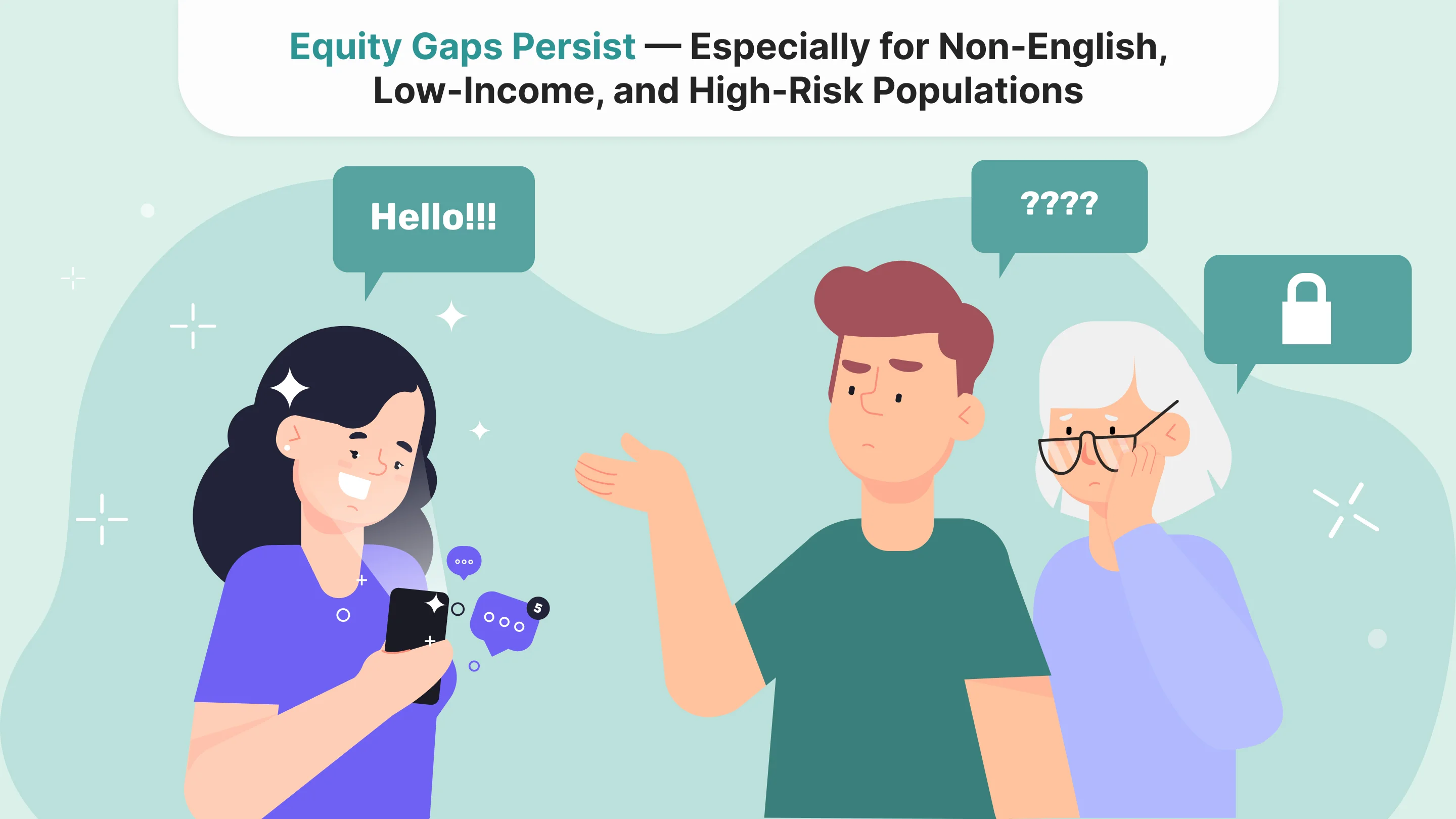

Mental Health Tech in 2025: Consolidation, Personalization, and the Uneven Reality of Access
Over the past five years, digital mental health solutions have surged — not just in number, but in influence. The global mental health app market is expected to surpass $17.5 billion by 2030, driven by post-pandemic demand, workforce shortages in psychiatry, and growing consumer comfort with remote care.
But scale doesn’t equal success. While hundreds of startups promise “AI-powered care” or “therapy on demand,” very few offer proven outcomes, equitable access, or clinical transparency. In 2025, the sector is undergoing a shift: from fragmented offerings to more integrated, evidence-based ecosystems. Below, we examine which models are working, where the cracks are showing, and what innovations might redefine the field, for better or worse.
This article builds on our previous piece, Leveraging AI for Mental Health Crisis Intervention, which explored how artificial intelligence is being used to identify and support individuals at risk in moments of acute distress. Here, we take a broader look at the evolving infrastructure of digital mental health—from clinical-grade platforms to consumer-facing tools—and analyze how these technologies are reshaping access, care quality, and accountability at scale.
Precision Care: AI-Driven Personalization is Becoming the Norm — But Not Yet the Standard
Startups like Spring Health have moved beyond static therapy matching. Their algorithmic triage tools integrate clinical data and user behavior to offer adaptive care plans: self-guided CBT, live coaching, psychiatry, or crisis care. After its Series E in 2024, Spring Health now serves over 10 million employees globally and reports that 70% of users experience improvements in mental health symptoms — such as reduced anxiety or depression — after 6 sessions, though third-party validation remains limited.
Other platforms like Ellipsis Health use vocal biomarkers to detect emotional distress in voice recordings, while Kintsugi deploys speech-based machine learning to flag signs of depression or anxiety within 20 seconds. These tools promise earlier detection, but raise privacy concerns, especially in employer-embedded use cases.
Insight: AI works best when used to augment—not replace—clinical decisions. But very few tools publish performance benchmarks or account for racial, linguistic, or gender bias in training data.
Hybrid Models Are Outperforming "App-Only" Solutions
Pure self-help apps are in decline. Instead, platforms are integrating asynchronous tools with access to human clinicians. Hims & Hers, originally a DTC health brand, has now layered in psychiatry, asynchronous screening, and optional live therapy, with pricing transparency ($99 per video session or $49/month for messaging-based care). Notably, they control the full experience: from intake to pharmacy fulfillment. In 2023, the company introduced MedMatch, an AI-powered diagnostic tool that personalizes treatment plans by dynamically pairing individuals with the most appropriate therapeutic or medication-based care, based on clinical guidelines, patient preferences, and outcomes data.
Meanwhile, Bend Health focuses on youth mental health through a collaborative care model: combining digital screening with regular feedback loops between parents, teens, and clinicians. It’s one of the few startups that prioritize family engagement — a major gap in most adult-centric platforms.
Trend: The platforms seeing the most traction in 2025 are those offering blended care pathways, not single-mode interventions. The most effective combines tech-enabled triage, evidence-based treatment, and sustained follow-up.
Equity Gaps Persist — Especially for Non-English, Low-Income, and High-Risk Populations

Despite the optimism around “mental health for all,” the reality is that most platforms are built for digitally literate, English-speaking, employer-insured users. In 2023, a significant portion of adults in the U.S. who sought help were unable to access it. Specifically, 45% of those individuals were unable to obtain the necessary support, according to the Federal Reserve Board.
Platforms like Wysa attempt to fill this gap through 24/7 multilingual AI chat, used in over 65 countries. It combines anonymous support with optional coaching and integration into primary care systems (notably in the UK and India). However, limited evidence exists on long-term outcomes beyond engagement metrics.
Tension: The more scalable a solution is, the more likely it is to sacrifice depth, nuance, or cultural relevance. Access ≠ equity.
Regulatory Pressure Is Mounting — and That’s a Good Thing
Startups like Cerebral became cautionary tales. Once valued at nearly $5 billion, the company came under investigation by the DOJ and FTC for overprescribing controlled substances and sharing user data with advertisers. In 2023, they were forced to restructure their model and cease prescribing certain medications altogether.
While not all companies are as exposed, the landscape is tightening. HIPAA violations, AI transparency rules, and payer scrutiny are forcing startups to act more like healthcare companies — and less like apps.
Signal: The winners in 2025 are those willing to build for longevity, not just growth, investing in clinical governance, outcomes measurement, and user protection.
Emerging Players to Watch: Platforms Moving Beyond “Therapy as a Service”
Some other emerging platforms are pushing the boundaries of what digital mental health can offer beyond the conventional “therapy as a service” model.Uplift is making therapy more social and scalable by offering group-based mental health sessions led by licensed facilitators, creating a peer-supported environment that’s both cost-effective and accessible. Real takes a different approach by providing on-demand psychoeducation and themed therapy pathways — such as those focused on grief, burnout, or relationships — designed for users who seek structure and support without committing to traditional 1:1 sessions. Tava Health is embedding licensed therapists directly into employer health plans, reducing referral friction and making early intervention part of routine workforce wellness. Meanwhile, NOCD is addressing one of the most underserved niches in mental health by delivering clinically validated ERP (exposure and response prevention) therapy for people with OCD, offering measurable outcomes and targeted care through a specialized digital platform.
Conclusion: What the Next Chapter Requires
Mental health tech in 2025 is no longer just a space of experimentation — it’s part of the care delivery system. Startups demonstrate how AI and hybrid models can personalize care at scale, while other platforms show the value of niche-specific solutions and constant availability. Meanwhile, companies are rethinking care formats altogether — moving beyond 1:1 therapy into group sessions and thematic journeys. However:
Outcome reporting remains opaque: Only a few companies publish validated data on clinical improvement. Most still rely on engagement metrics (e.g., session counts, app usage), which say little about actual patient progress.
Access is not yet equity: The vast majority of platforms are built around English-speaking, digitally fluent, and employer-insured populations. There is a clear lack of robust offerings for non-English speakers, older adults, and users without internet or private insurance.
Fragmentation is real: While some platforms offer end-to-end care (intake, diagnosis, treatment, follow-up), most still operate in silos. This results in poor handoffs between services and limits integration with primary care or public health systems.
To ensure that this growth leads to sustainable, ethical, and equitable care, the next chapter of mental health tech must be defined by:
Transparency — Clear, public-facing outcome data, not just product claims.
Inclusivity by design — Solutions developed with, not just for, marginalized users.
Clinical integrity — Collaboration with licensed professionals, guided by best practices and oversight.
System-level integration — Seamless connections with primary care, public payers, and community support.
Innovation is no longer enough. It’s time for accountability.
Tell us about your project
Fill out the form or contact us

Tell us about your project
Thank you
Your submission is received and we will contact you soon
Follow us
